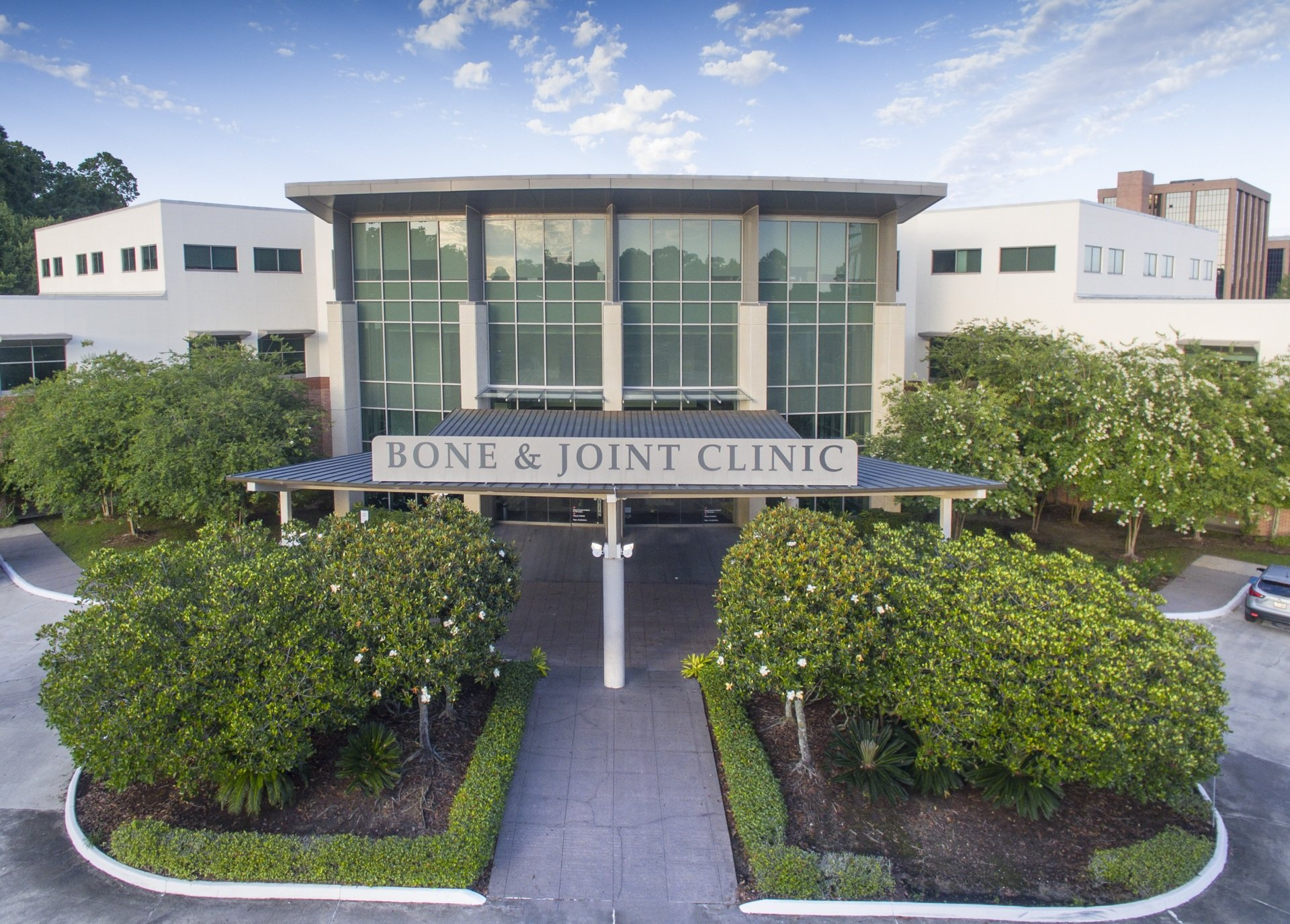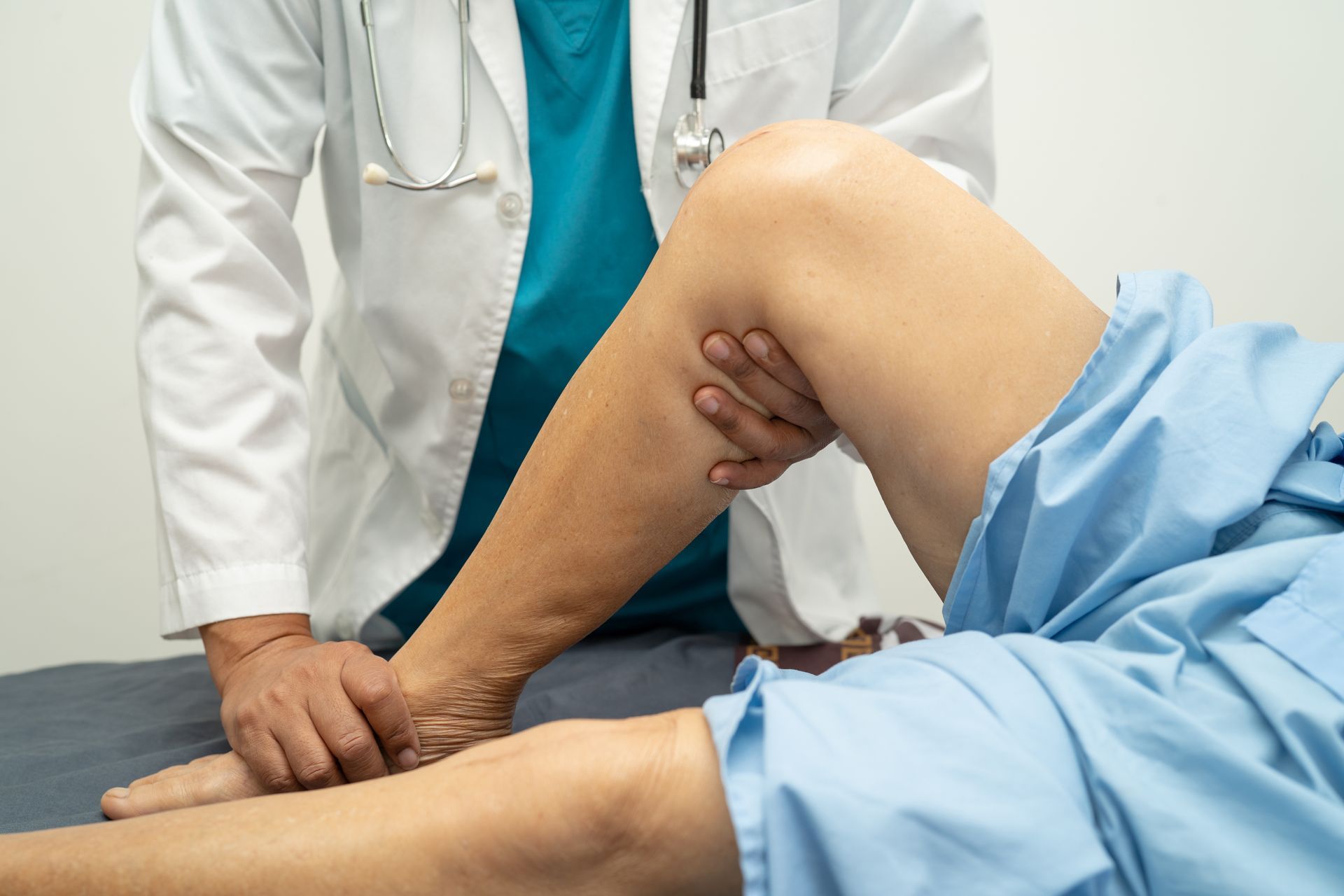When Jeffrey Ardoin's ankle pain from his flatfeet and plantar fasciitis started to impact his day-to-day life, he took a co-worker's recommendation to see Dr. Zachary Rohr, D.P.M., at the Bone and Joint Clinic of Baton Rouge. "I run a mechanic shop, so I'm walking all day. Going back and forth between different computers and cars made taking every step very painful. But not anymore!" says Jeffrey.
What Are Flatfeet?
Flatfeet, also known as fallen arches, is a common condition where the arches on the inside of the feet are flattened, causing the entire sole of the foot to make contact with the ground. Flatfeet conditions can result from genetics, age, injury, or certain health conditions. Flatfeet may not always cause pain or discomfort, but some individuals may experience issues such as foot fatigue, arch or heel pain, and difficulty with balance.
While flatfeet don't always require treatment, supportive footwear, orthotic inserts, and exercises to strengthen the feet and ankles can help alleviate symptoms and improve overall foot function. If flatfeet are causing persistent discomfort, consulting with a healthcare professional or a podiatrist can provide personalized guidance and potential treatment options.
What is Plantar Fasciitis?
Plantar fasciitis is a common foot condition characterized by inflammation of the plantar fascia, a thick band of tissue that runs across the bottom of the foot, connecting the heel bone to the toes. This inflammation can result in heel pain, especially during the first steps after waking up or prolonged rest periods.
Plantar fasciitis often develops due to overuse, improper footwear, or biomechanical issues, which strain the plantar fascia. Individuals who are active, overweight, or have tight calf muscles may be more susceptible. Treatment for Plantar fasciitis typically involves rest, ice, stretching exercises, and supportive footwear.
In severe cases, doctors may recommend medical interventions like orthotics, physical therapy, or corticosteroid injections to alleviate persistent symptoms. Detecting plantar fasciitis early and proactively managing it is crucial for effective treatment and preventing long-term complications.
Different Treatment Plans for Flatfeet and Plantar Fasciitis
Jeffrey first saw Dr. Rohr in early 2023. "I remember he came in and was very personable. He wasn't in a rush, asked questions, and listened to my answers," he remembers. While Jeffrey had tried inserts in the past to alleviate the problems with his fallen arches, they never provided relief.
After some x-rays, Dr. Rohr confirmed that his feet had turned and offered a couple of treatment options for his foot condition. One option was surgery, and the other was using shots and braces to relieve pain and get his feet back in line. "The shots and braces were a good first choice to try before going to surgery. The shots help with the ankle pain. While I can get them every three to four months, I haven't needed to return yet. The pain is no longer constant like it was before." Furthermore, the braces are helping to alleviate pain and help with the structure of his feet.
Today, Jeffrey is getting around better than ever, in large part due to Dr. Rohr's treatment plan. "I would definitely recommend Dr. Rohr and the Bone and Joint Clinic to everyone. Everyone from the front staff to the nurses were all nice."


7301 Hennessy Blvd.
Suite 200
Baton Rouge, LA 70808
tel: (225) 766-0050
fax: (225) 766-1499
Bone & Joint Clinic of Baton Rouge, Inc. complies with applicable Federal civil rights laws and does not discriminate on the basis of race, color, national origin, age, disability or sex.
Click to view our notice.
Bone & Joint Clinic of Baton Rouge | All Rights Reserved.


